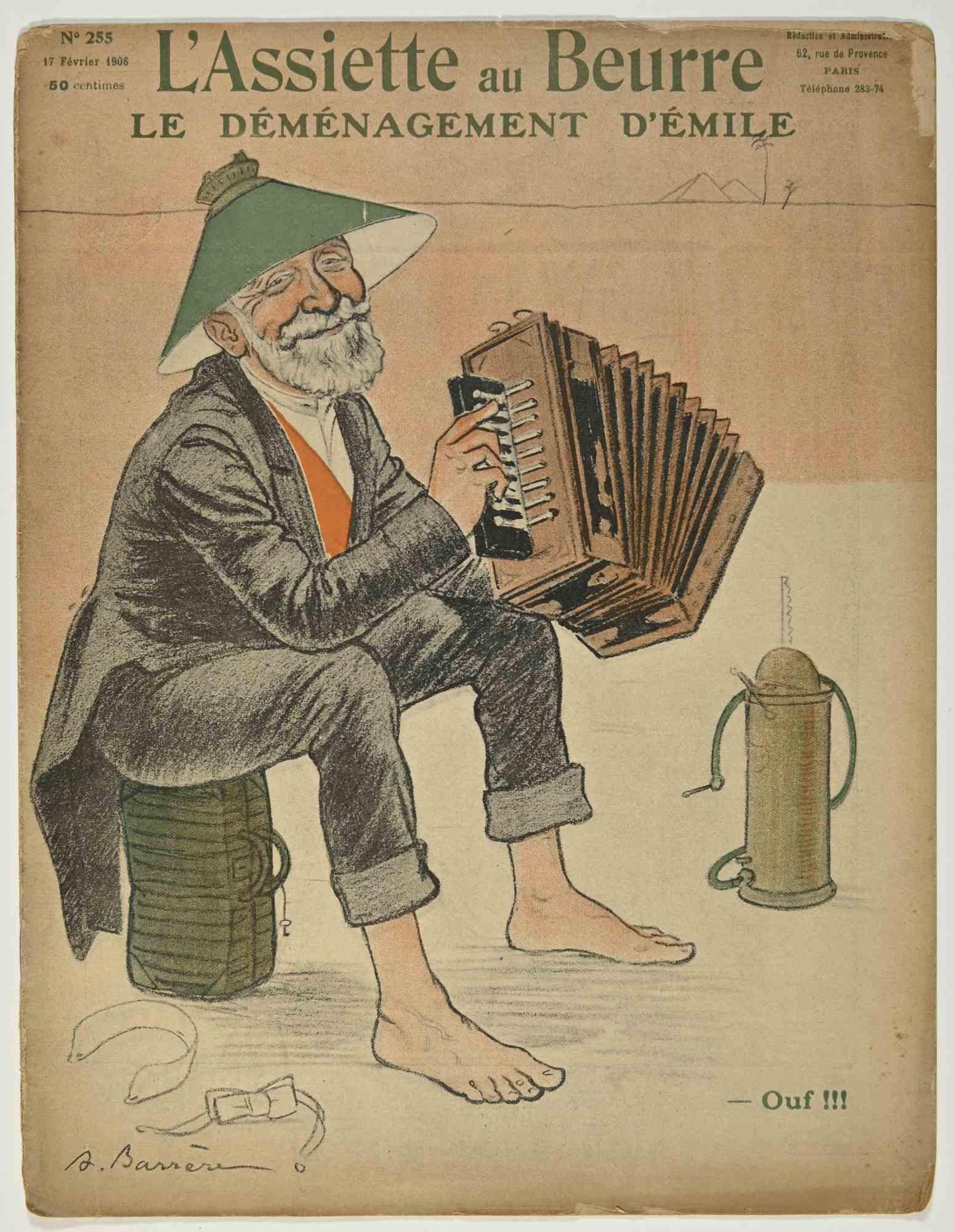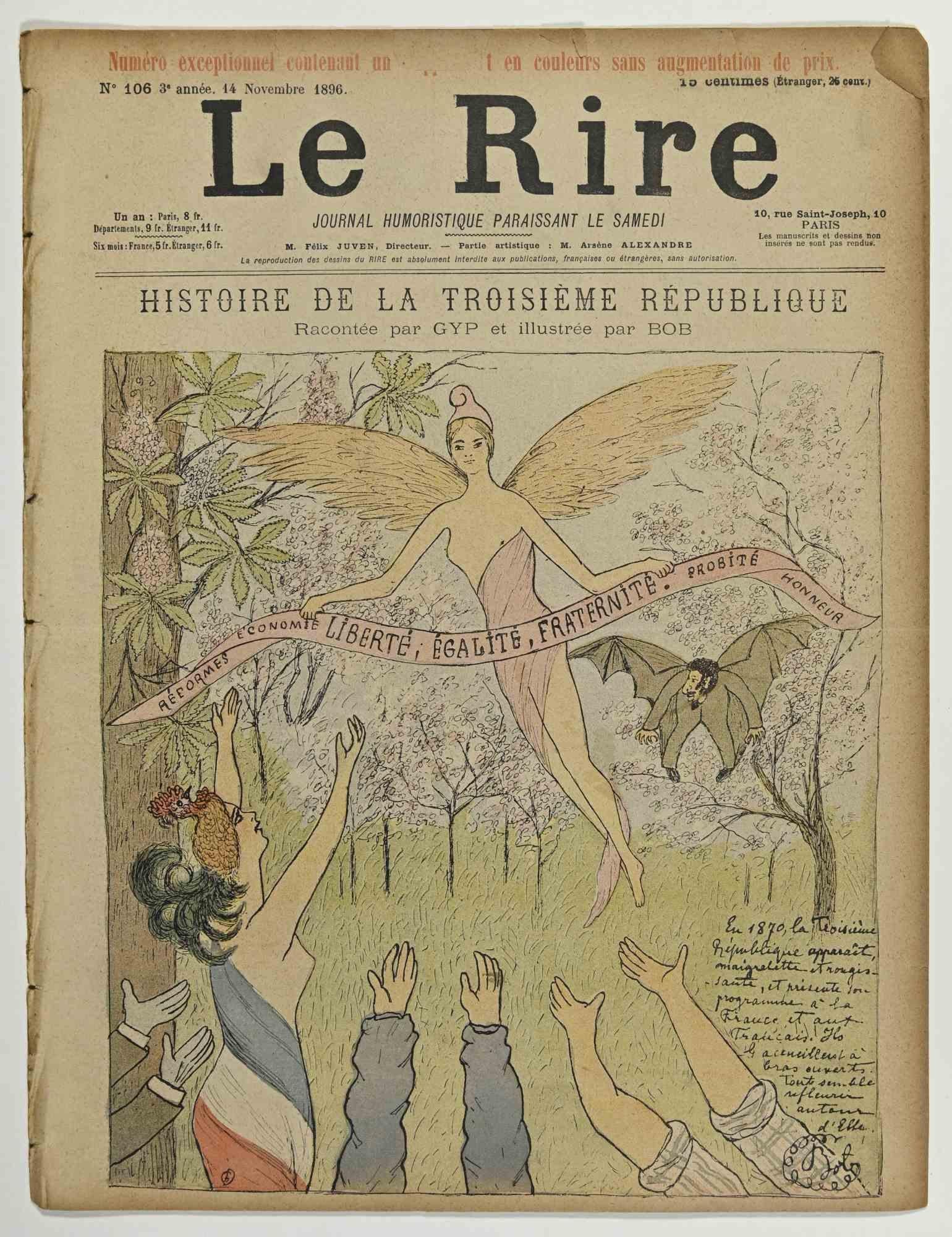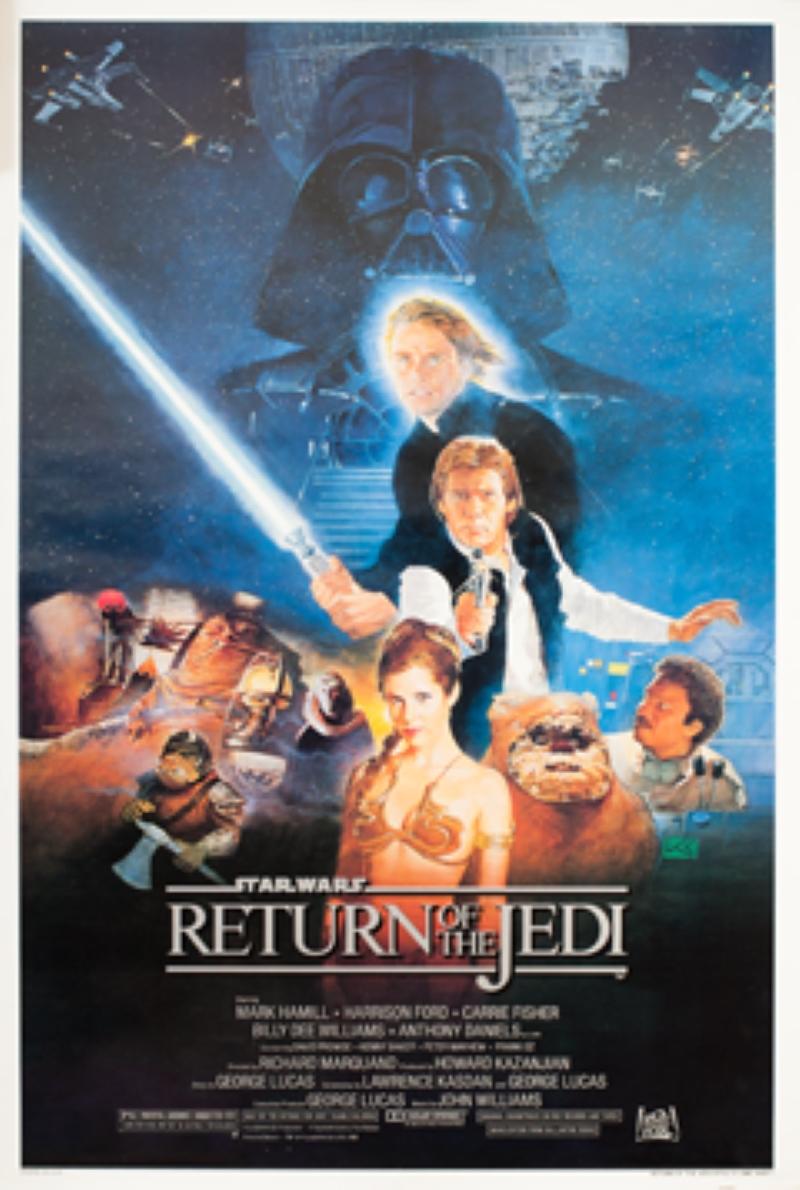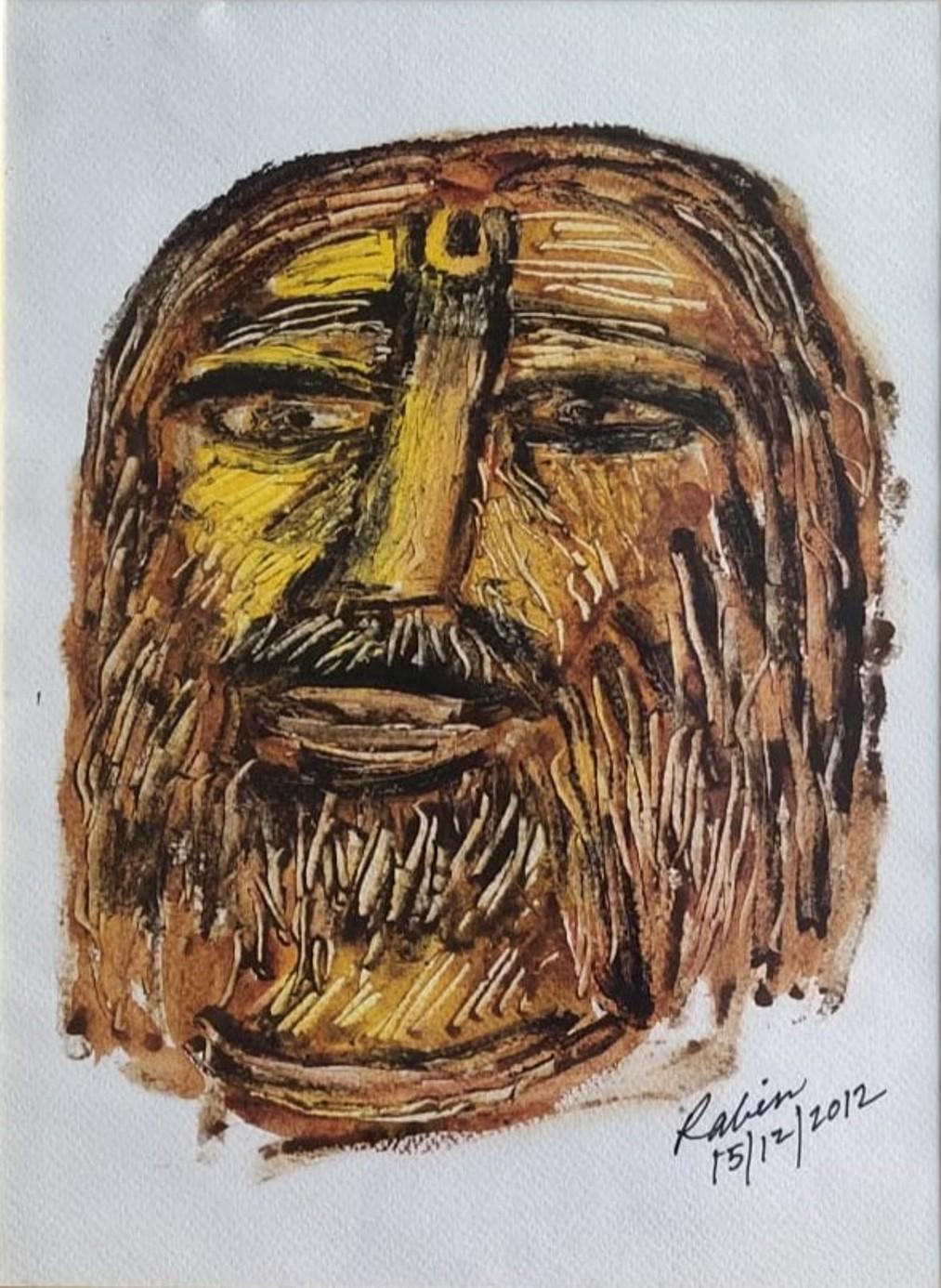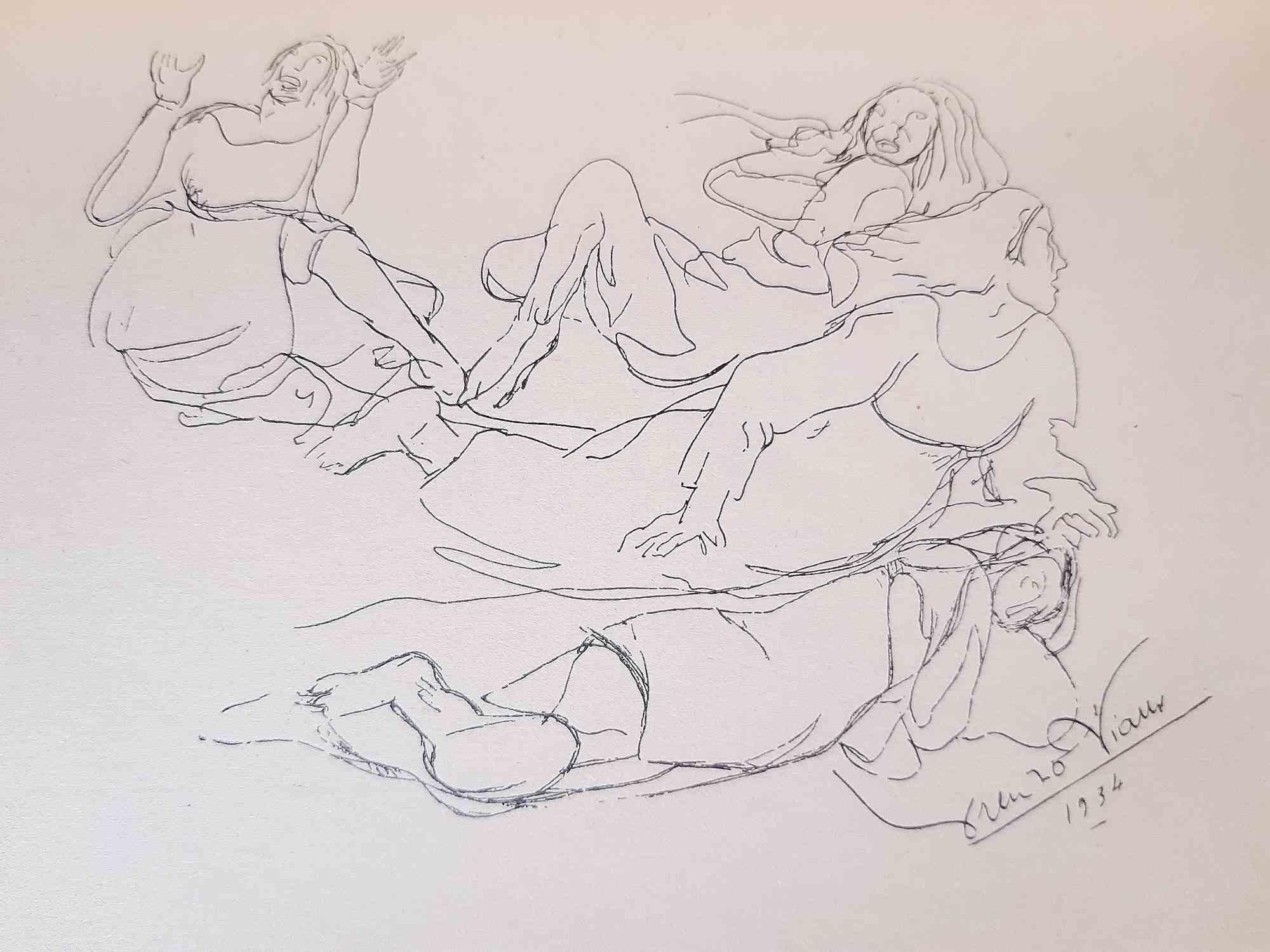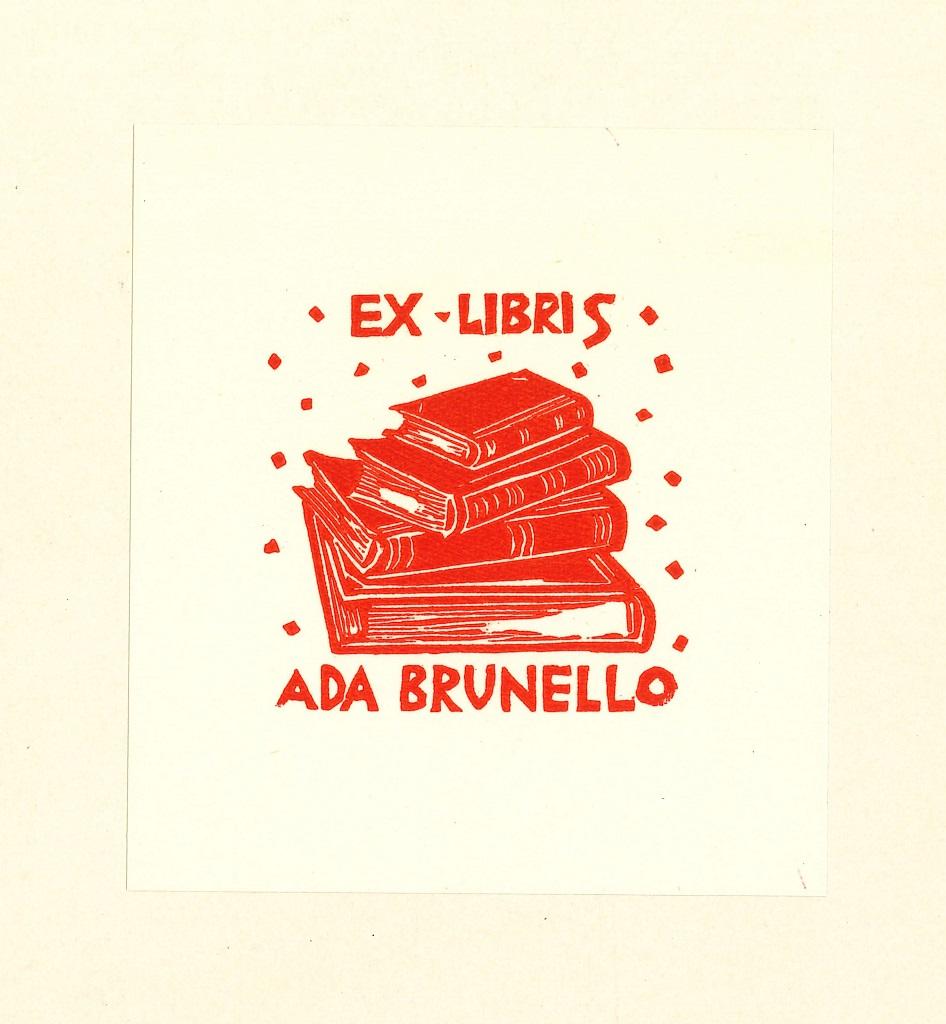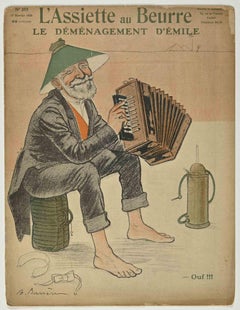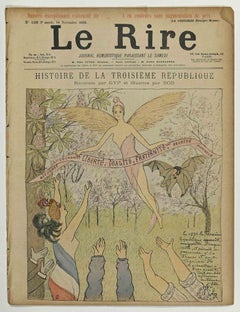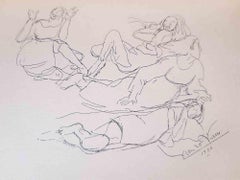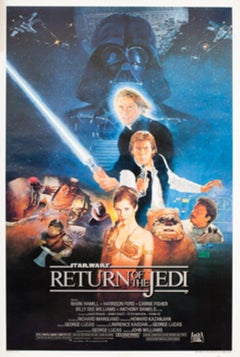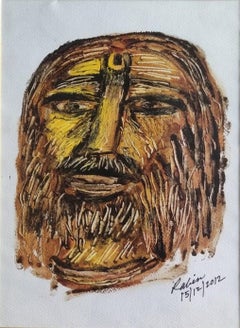Items Similar to Good Wishes Leaflet - Greetings Card by André Lothe - 1950s
Want more images or videos?
Request additional images or videos from the seller
1 of 3
UnknownGood Wishes Leaflet - Greetings Card by André Lothe - 1950s1950s
1950s
About the Item
Good Wishes Leaflet is a Merry Christmas and Happy New Year folding card Signed by André Lothe.
Around 1950s-1960s. In French and English. Inside a colour reproduction of The Annunciation by Iganz Günther, 1764. Printed by the Council of Europe.
Excellent condition: As good as New.
Collect or present this unique piece of the Spanish artist, as if it was a holy relic!
André Lhote (Bordeaux, 1885 - Paris, 1962)
French painter and illustrator, André Lhote made his debut in 1906 at the "Indépendants"; in 1907 he exhibited at the Salon d'Automne. Influenced by Cézanne and by Cubism, he finds his own style. He became director of the art school in Montparnasse, from 1919 to 1930 he collaborated with the Nouvelle Revue Française. In 1938 he founded a very active artistic center in Gordes, Provence. His essays concerning the landscape (1939) and on the figure (1951) are still today best-known.
- Creation Year:1950s
- Dimensions:Height: 10.44 in (26.5 cm)Width: 6.5 in (16.5 cm)Depth: 0.04 in (1 mm)
- Medium:
- Movement & Style:
- Period:
- Condition:Insurance may be requested by customers as additional service, contact us for more information.
- Gallery Location:Roma, IT
- Reference Number:Seller: M-1136511stDibs: LU65037381682
About the Seller
4.9
Platinum Seller
Premium sellers with a 4.7+ rating and 24-hour response times
1stDibs seller since 2017
7,494 sales on 1stDibs
Typical response time: 1 hour
- ShippingRetrieving quote...Shipping from: Roma, Italy
- Return Policy
Authenticity Guarantee
In the unlikely event there’s an issue with an item’s authenticity, contact us within 1 year for a full refund. DetailsMoney-Back Guarantee
If your item is not as described, is damaged in transit, or does not arrive, contact us within 7 days for a full refund. Details24-Hour Cancellation
You have a 24-hour grace period in which to reconsider your purchase, with no questions asked.Vetted Professional Sellers
Our world-class sellers must adhere to strict standards for service and quality, maintaining the integrity of our listings.Price-Match Guarantee
If you find that a seller listed the same item for a lower price elsewhere, we’ll match it.Trusted Global Delivery
Our best-in-class carrier network provides specialized shipping options worldwide, including custom delivery.More From This Seller
View AllL' Assiette au Beurre - Magazine by Adrien Barrère - 1906
By Adrien Barrère 1
Located in Roma, IT
L'Assiette au Beurre is a Comic Magazine published in 1906, reproducing drawings by Adrien Barrère (1874–1931).
Good condition on a yellowed paper, except for some torn paper on the...
Category
Early 1900s Modern More Art
Materials
Paper
$173 Sale Price
25% Off
Le Rire - Magazine - 1896
Located in Roma, IT
Le Rire is a Comic Magazine published in 1906, reproducing drawings by Bob (1849–1932).
Good condition on a yellowed paper, except for some torn paper on the left margin.
Signed, ...
Category
1890s Modern More Art
Materials
Paper
$173 Sale Price
25% Off
Le chiavi nel Pozzo - Original Rare Book Illustrated by Max Unold - 1935
By Lorenzo Viani
Located in Roma, IT
Le chiavi nel pozzo is an original modern rare book illustrated by Lorenzo Viani (Viareggio, November 1, 1882 - Lido di Ostia, November 2, 1936) in 1935.
Original Edition.
Publishe...
Category
1930s Modern More Art
Materials
Paper
Ex Libris Ada Brunello - Original Woodcut - Early 20th Century
Located in Roma, IT
"Ex Libris Ada Brunello" is an original Modern Artwork realized in the 20th Century.
Original woodcut print on ivory-colored paper.
The work is glued on cardboard.
Total dimensi...
Category
Early 20th Century Modern More Art
Materials
Paper, Woodcut
Ex Libris Anne-Marie - Original Woodcut - Early 20th Century
Located in Roma, IT
"Ex Libris Anne-Marie" is an original Modern Artwork realized in France in the 20th Century.
Original Ex Libris. Hand-signed by the artist in pencil on the lower right corner.
Ori...
Category
Early 20th Century Modern More Art
Materials
Paper, Woodcut
Ex Libris Ester Tohvert - Original Woodcut - Early 20th Century
Located in Roma, IT
"Ex Libris Ester Tohvert" is an original Modern Artwork realized in the 20th Century.
Original woodcut print on ivory-colored paper.
The work is glued on cardboard.
Total dimens...
Category
Early 20th Century Modern More Art
Materials
Paper, Woodcut
You May Also Like
Return of the Jedi 1983 Original Vintage Poster
Located in London, GB
Return of the Jedi 1983 Original Vintage Poster
measures 27×41" inches / 68 x 104 cm
unfolded
rolled
excellent condition
Return of the Jedi (also known as Star Wars: Episode VI ...
Category
1980s Modern Figurative Prints
Materials
Paper, C Print
Face, Acrylic on paper by Modern Indian Artist Rabin Mondal “In Stock”
By Rabin Mondal
Located in Kolkata, West Bengal
Rabin Mondal - Face
12 x 9 Inches
Acrylic on Paper
2012
Mondal was a clear observant of the various migrant workers who lived along his house in the conjected Howrah Area. They ca...
Category
2010s Modern Figurative Paintings
Materials
Paper, Acrylic
Rare 1950s Original Syndicated Ink Drawing Cartoon Strip Susie Q Smith Comic Art
Located in Surfside, FL
SUSIE Q. SMITH
Medium: Newspaper comics
Distributed by: King Features Syndicate
First Appeared: 1945
Creators: Linda and Jerry Walter
6.25 X 18.25
Like her contemporaries, Aggie Ma...
Category
1950s American Modern More Art
Materials
Paper, Ink
Rare 1950s Vintage Syndicated Ink Drawing Cartoon Strip Susie Q Smith Comic Art
Located in Surfside, FL
SUSIE Q. SMITH
Medium: Newspaper comics
Distributed by: King Features Syndicate
First Appeared: 1945
Creators: Linda and Jerry Walter
5.5 X 19.5
Dated August 13, 1954 in top right corner.
Like her contemporaries, Aggie Mack, Candy and Patsy Walker (before her conversion to a superhero), Susie Q. Smith was a female Archie-type — not exactly an imitator, because Archie, who had started only four years earlier, hadn't yet become popular enough to spawn imitators, but part of his genre. She attended high school, where her teachers often seemed unreasonable to her, interacted with the opposite gender in a typically adolescent way, and her parents didn't completely understand her. And she was cute and perky as only a teenage girl can be.
Susie was the star of a comic strip distributed by King Features, the biggest of the comic strip syndicates, whose other offerings have ranged from Jackys Diary to Prince Valiant. King launched the strip in both daily and Sunday form in 1945. Daily, she was only in a panel at first, but it expanded into a full, multi-panel strip on February 7, 1953. In a very odd turn of events, in 1953 the Walters chose to leave King Features behind and hitch their wagon at the McNaught Syndicate. The creators were Harold "Jerry" Walter and his wife, Linda. Jerry was also responsible for Jellybean Jones, who has nothing to do with Jughead Jones's young sister, a modern-day addition to the Archie cast of characters. Together, they did The Lively Ones during the 1960s. Though each was capable of doing both major jobs in comic strip production, their usual working method was for Jerry to dream up the ideas and write the dialog, while Linda did the artwork.
The Walters also collaborated on a series of Susie Q. Smith comic books for Dell Comics. Instead of reprinting newspaper strips, these ran new stories by the Walters. Between 1951 and '54, four issues were published as part of the Four Color Comics series, where many minor comic strips, including Dotty Dripple, Timmy and Rusty Riley had found a home. It had no other media spin-offs.
Susie Q. Smith had a respectable run in the newspapers, but it ended in 1959.
Jerry Walter (1915 - 2007) was an abstract expressionist artist whose output of energetic and colorful paintings were the products of the rich artistic milieu of post-war New York City. He was born Harold Frank Walter in Mount Pleasant, Iowa on November 25, 1915. After graduating from Colgate University in 1937, Walter moved to New York City, where he studied drawing and painting at the New School and the Art Students’ League. Before concentrating seriously on his art, he spent several years as a successful copywriter and idea man for the advertising agencies of J. Walter Thompson, McCann Ericson, and BBDO. During this time, he also worked as a syndicated cartoonist. Collaborating with his wife, Linda, his best-known series was Susie Q. Smith, which first appeared in 1945 and described as a “female Archie type.” Very popular, the cartoon was later the subject of a series of comic books published from 1951 to 1954. After serving in the United States Army for three years during World War II, Walter began to paint seriously. He ascribed his earliest artistic influence to Joan Miró, whose Dog Barking at the Moon (1926) he viewed when he was twelve, the year he published his first cartoon. Walter later wrote that jazz, “the first native expression of so-called modernism” was a strong influence on his work.
During the later 1940s, Walters spent time at the Research Studio in Maitland, Florida. Founded in 1937 by artist and architect J. André Smith and supported by the philanthropist Mary Curtis Bok, the Research Studio was a lively colony that hosted prominent artists, including Milton Avery, Ralston Crawford, and Doris Lee. While at the Studio, Walter’s work was purchased by Frank Crowninshield. A founding trustee of the Museum of Modern Art and editor of Vanity Fair, Crowinshield was a noted collector; his collection included important works by Pablo Picasso, Marc Chagall, Henri Matisse, Edgar Degas, George Bellows, and Pierre Bonnard. Returning to New York after his time at the Studio, Walter became an active member of the New York school of the abstract expressionist movement, and in the summer of 1956, Walter exhibited 13 paintings and a selection of drawings at New York’s Chase Gallery. The adroit manipulation of both color and composition evident in his work shows the influence of Abstract Expressionism, particularly Willem de Kooning, Arshile Gorky, and Hans Hofmann.
illustrator and female cartoonist Linda Walter was the talented female mind behind the beloved "Susie Q. Smith" comic strip. She played an instrumental role in shaping the cultural landscape through her vibrant illustrations. Known for the timeless charm of the "Susie Q. Smith" comic strip, Linda's artistry brought joy and laughter to countless readers during the 1950s and continues to resonate with fans across generations. She was part of the Woodstock artists community. from Women in Comics: Linda Walter was the artist of newspaper strip Susie Q. Smith, which was written by her husband, Jerry. It was syndicated by King Features Syndicate and ran from 1945 to 1959. The Walters also contributed original Susie Q. Smith stories to Dell's Four Color comic books from 1951 to 1954. From 1964-1965, they created a singled panel comic called The Lively Ones.
Vintage Golden Age of Comics era.
The Golden Age of Comic Books describes an era in the history of American comic books from 1938 to 1956. During this time, modern comic books were first published and rapidly increased in popularity. The superhero archetype was created. Between 1939 and 1941 Detective Comics (DC) and its sister company, All-American Publications, introduced popular superheroes such as Batman and Robin, Wonder Woman, the Flash, Green Lantern, Doctor Fate, the Atom, Hawkman, Green Arrow and Aquaman. Timely Comics, the 1940s predecessor of Marvel Comics, had million-selling titles featuring the Human Torch, the Sub-Mariner, and Captain America. Another notable series was The Spirit by Will Eisner.
Dell Comics' non-superhero characters (particularly the licensed Walt Disney animated-character comics) outsold the superhero comics of the day. The publisher featured licensed movie and literary characters such as Mickey Mouse, Donald Duck, Roy Rogers and Tarzan. Additionally, MLJ's introduction of Archie Andrews in Pep Comics #22 (December 1941) gave rise to teen humor comics, with the Archie Comics...
Category
1950s American Modern More Art
Materials
Paper, Ink
Rare 1950s Original Syndicated Ink Drawing Cartoon Strip Susie Q Smith Comic Art
Located in Surfside, FL
SUSIE Q. SMITH
Medium: Newspaper comics
Distributed by: King Features Syndicate
First Appeared: 1945
Creators: Linda and Jerry Walter
5.5 X 17.75
Like her contemporaries, Aggie Mac...
Category
1950s American Modern More Art
Materials
Paper, Ink
Vintage Golden Age Syndicated Ink Drawing Cartoon Strip Susie Q Smith Comic Art
Located in Surfside, FL
SUSIE Q. SMITH
Medium: Newspaper comics
Distributed by: King Features Syndicate
First Appeared: 1945
Creators: Linda and Jerry Walter
6.5 X 19.5
Like her contemporaries, Aggie Mack, Candy and Patsy Walker (before her conversion to a superhero), Susie Q. Smith was a female Archie-type — not exactly an imitator, because Archie, who had started only four years earlier, hadn't yet become popular enough to spawn imitators, but part of his genre. She attended high school, where her teachers often seemed unreasonable to her, interacted with the opposite gender in a typically adolescent way, and her parents didn't completely understand her. And she was cute and perky as only a teenage girl can be.
Susie was the star of a comic strip distributed by King Features, the biggest of the comic strip syndicates, whose other offerings have ranged from Jackys Diary to Prince Valiant. King launched the strip in both daily and Sunday form in 1945. Daily, she was only in a panel at first, but it expanded into a full, multi-panel strip on February 7, 1953. In a very odd turn of events, in 1953 the Walters chose to leave King Features behind and hitch their wagon at the McNaught Syndicate. The creators were Harold "Jerry" Walter and his wife, Linda. Jerry was also responsible for Jellybean Jones, who has nothing to do with Jughead Jones's young sister, a modern-day addition to the Archie cast of characters. Together, they did The Lively Ones during the 1960s. Though each was capable of doing both major jobs in comic strip production, their usual working method was for Jerry to dream up the ideas and write the dialog, while Linda did the artwork.
The Walters also collaborated on a series of Susie Q. Smith comic books for Dell Comics. Instead of reprinting newspaper strips, these ran new stories by the Walters. Between 1951 and '54, four issues were published as part of the Four Color Comics series, where many minor comic strips, including Dotty Dripple, Timmy and Rusty Riley had found a home. It had no other media spin-offs.
Susie Q. Smith had a respectable run in the newspapers, but it ended in 1959.
Jerry Walter (1915 - 2007) was an abstract expressionist artist whose output of energetic and colorful paintings were the products of the rich artistic milieu of post-war New York City. He was born Harold Frank Walter in Mount Pleasant, Iowa on November 25, 1915. After graduating from Colgate University in 1937, Walter moved to New York City, where he studied drawing and painting at the New School and the Art Students’ League. Before concentrating seriously on his art, he spent several years as a successful copywriter and idea man for the advertising agencies of J. Walter Thompson, McCann Ericson, and BBDO. During this time, he also worked as a syndicated cartoonist. Collaborating with his wife, Linda, his best-known series was Susie Q. Smith, which first appeared in 1945 and described as a “female Archie type.” Very popular, the cartoon was later the subject of a series of comic books published from 1951 to 1954. After serving in the United States Army for three years during World War II, Walter began to paint seriously. He ascribed his earliest artistic influence to Joan Miró, whose Dog Barking at the Moon (1926) he viewed when he was twelve, the year he published his first cartoon. Walter later wrote that jazz, “the first native expression of so-called modernism” was a strong influence on his work.
During the later 1940s, Walters spent time at the Research Studio in Maitland, Florida. Founded in 1937 by artist and architect J. André Smith and supported by the philanthropist Mary Curtis Bok, the Research Studio was a lively colony that hosted prominent artists, including Milton Avery, Ralston Crawford, and Doris Lee. While at the Studio, Walter’s work was purchased by Frank Crowninshield. A founding trustee of the Museum of Modern Art and editor of Vanity Fair, Crowinshield was a noted collector; his collection included important works by Pablo Picasso, Marc Chagall, Henri Matisse, Edgar Degas, George Bellows, and Pierre Bonnard. Returning to New York after his time at the Studio, Walter became an active member of the New York school of the abstract expressionist movement, and in the summer of 1956, Walter exhibited 13 paintings and a selection of drawings at New York’s Chase Gallery. The adroit manipulation of both color and composition evident in his work shows the influence of Abstract Expressionism, particularly Willem de Kooning, Arshile Gorky, and Hans Hofmann.
illustrator and female cartoonist Linda Walter was the talented female mind behind the beloved "Susie Q. Smith" comic strip. She played an instrumental role in shaping the cultural landscape through her vibrant illustrations. Known for the timeless charm of the "Susie Q. Smith" comic strip, Linda's artistry brought joy and laughter to countless readers during the 1950s and continues to resonate with fans across generations. She was part of the Woodstock artists community. from Women in Comics: Linda Walter was the artist of newspaper strip Susie Q. Smith, which was written by her husband, Jerry. It was syndicated by King Features Syndicate and ran from 1945 to 1959. The Walters also contributed original Susie Q. Smith stories to Dell's Four Color comic books from 1951 to 1954. From 1964-1965, they created a singled panel comic called The Lively Ones.
Vintage Golden Age of Comics era.
The Golden Age of Comic Books describes an era in the history of American comic books from 1938 to 1956. During this time, modern comic books were first published and rapidly increased in popularity. The superhero archetype was created. Between 1939 and 1941 Detective Comics (DC) and its sister company, All-American Publications, introduced popular superheroes such as Batman and Robin, Wonder Woman, the Flash, Green Lantern, Doctor Fate, the Atom, Hawkman, Green Arrow and Aquaman. Timely Comics, the 1940s predecessor of Marvel Comics, had million-selling titles featuring the Human Torch, the Sub-Mariner, and Captain America. Another notable series was The Spirit by Will Eisner.
Dell Comics' non-superhero characters (particularly the licensed Walt Disney animated-character comics) outsold the superhero comics of the day. The publisher featured licensed movie and literary characters such as Mickey Mouse, Donald Duck, Roy Rogers and Tarzan. Additionally, MLJ's introduction of Archie Andrews in Pep Comics #22 (December 1941) gave rise to teen humor comics, with the Archie Comics...
Category
1950s American Modern More Art
Materials
Paper, Ink
